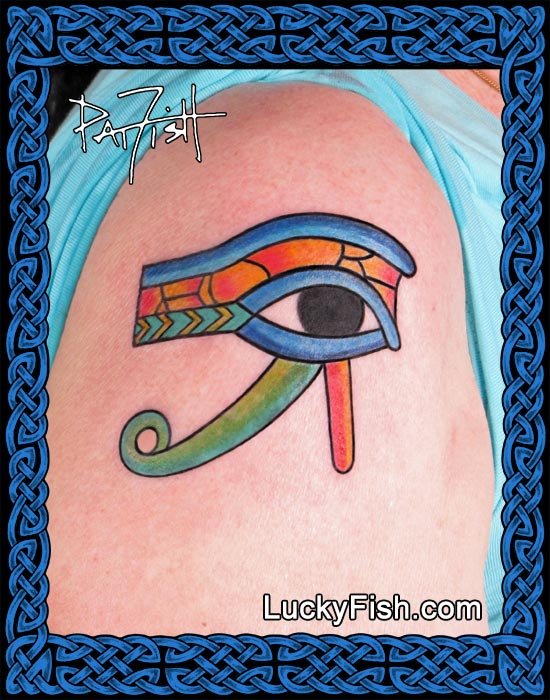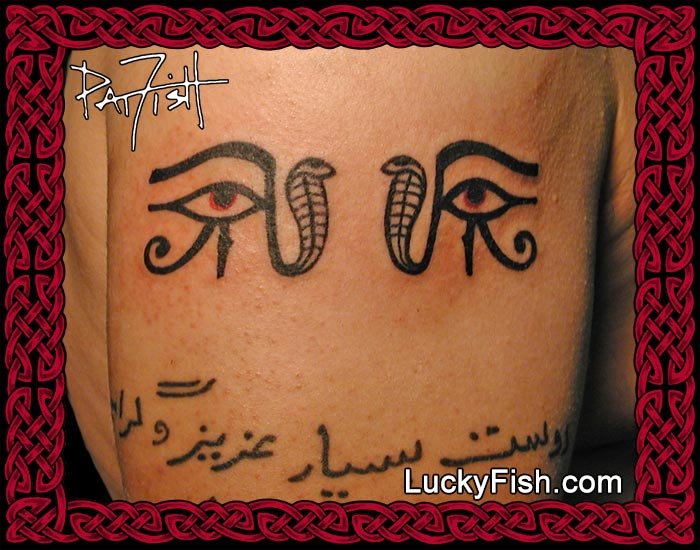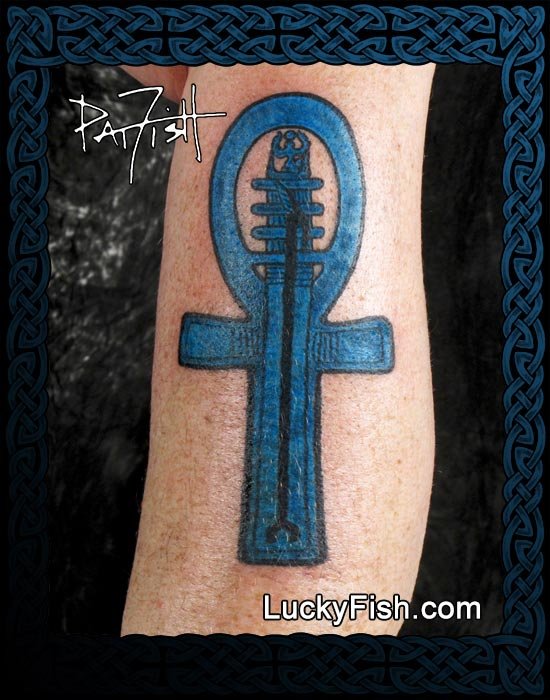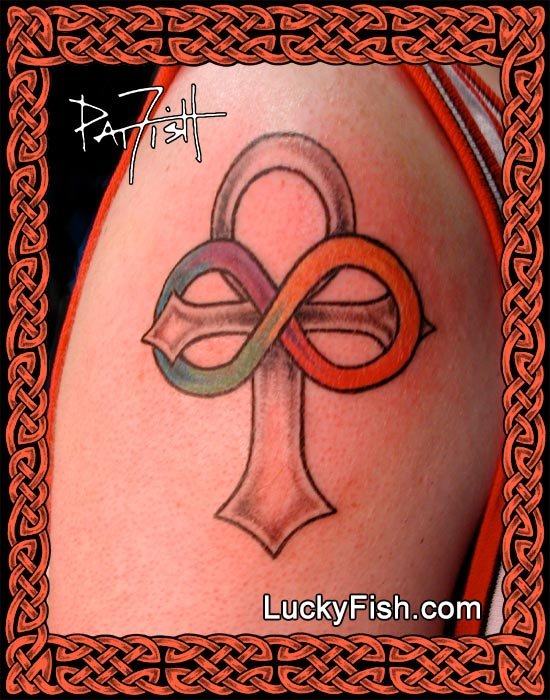The fascinating world of Egyptian tattoos offers a blend of mystery, elegance, and ancient symbolism. From the enigmatic Eye of Horus tattoo to the auspicious Egyptian scarab beetle tattoo, these designs have captured the imagination of tattoo enthusiasts worldwide. This article delves into the rich tapestry of tattooing in ancient Egypt and the myriad symbols that form an integral part of this enduring legacy.
The All-Seeing Eye: The Eye of Horus Tattoo
At the heart of Egyptian tattoos lies the famous Eye of Horus tattoo. Often referred to as the "Egyptian eye tattoo", this iconic design symbolizes protection, royal power, and good health. In ancient mythology, Horus, the falcon-headed god, had his eye injured during a battle, but it was later restored by the god Thoth. As a result, the Eye of Horus represents healing and restoration.
The eye of Horus tattoo meaning is multi-layered. On a deeper level, it embodies the cyclical nature of life and death, the triumph of good over evil, and the undying spirit of resilience. For many, getting an Egyptian eye tattoo is not just about embracing ancient aesthetics but also about invoking the protective and healing energies associated with Horus.
The Distinction Between the Eye of Horus and the Eye of Ra Tattoo
As enthusiasts dive deeper into the realm of Egyptian tattoos, a common point of inquiry arises between two prominent symbols: the Eye of Horus and the Eye of Ra tattoos. Though often used interchangeably in modern culture, these two iconic symbols have distinct origins, meanings, and implications in ancient Egyptian mythology.
The Eye of Horus tattoo, as previously mentioned, is deeply rooted in protection, healing, and restoration. Horus, a sky god represented as a falcon, lost his eye in a battle with Set, his uncle, symbolizing the fight between order and chaos. Later, the eye was restored, making it a symbol of healing. It is also known as the "Wadjet Eye," after the goddess Wadjet, who was a protective deity.
On the other hand, the Eye of Ra tattoo is associated with the sun god, Ra. This symbol is typically more aggressive in nature, representing the destructive aspect of the sun's heat and a protective force that wards off evil. It is akin to the fiery glare of Ra, sent to observe and combat malevolent forces on Earth. In some tales, the Eye of Ra is personified as the goddess Sekhmet, a lioness known for her fierce demeanor.
The Legacy of Tattooing in Ancient Egypt
Contrary to popular belief, tattooing in ancient Egypt was not just a mere decorative practice. Tattoos were significant for various reasons, ranging from religious devotion and rites of passage to medicinal applications. Mummies like that of Amunet, a priestess of Hathor, showcased tattoo patterns, suggesting that tattoos might have had spiritual or protective meanings. The symbols chosen often conveyed specific messages or evoked certain powers, making the art deeply personal and spiritual.
Other Iconic Egyptian Tattoos
While the Eye of Horus holds a special place, several other symbols are equally celebrated in the realm of Egyptian tattoos:
Egyptian Beetle Tattoo
The Egyptian beetle tattoo, an iconic symbol from ancient Egypt, epitomizes the sun god Ra's rebirth. This emblem uniquely captures regeneration, nature's renewal, transformation symbolizing personal and spiritual growth, and a protective aura against negative forces. Rooted deeply in Egyptian culture, this tattoo transcends time, echoing ancient beliefs and values. The scarab is a kind of dung beetle, and viewed a symbol of restoration of the living essence of the land, as it spends its life rolling tiny bits of manure into cracks in the Earth surface, fertilizing and turning waste into growth.
Egyptian Ankh Tattoo
The Egyptian ankh tattoo, a cherished emblem from ancient Egypt, stands as a testament to life, immortality, and the cyclical nature of death and rebirth. This looped cross, resonating with the promise of eternal life, continues to captivate those fascinated by the rich tapestry of Egyptian tattoos.
For centuries, the ankh symbol has resonated with themes of unity, eternity, and the interconnectedness of existence. In recent times, the fusion of the ankh symbol with the vibrant colors of the Pride flag has birthed the evocative Ankh LGBTQ Tattoo.
The Pride flag, with its rainbow spectrum, stands as a bold testament to love, acceptance, and the diverse spectrum of human sexuality and gender. When combined with the ankh tattoo, it creates a powerful visual statement. The ankh, representing eternal life, melded with the Pride colors, signifies the enduring spirit of the LGBTQ community and their timeless quest for recognition and equality.
Opting for an Ankh LGBTQ Tattoo is not just a nod to ancient wisdom but also a contemporary stand for love in all its forms. It's a poignant reminder of the community's strength, resilience, and the enduring quest for a life filled with acceptance and pride. Through this tattoo, wearers proudly proclaim: love, life, and unity transcend time.
Egyptian Wings Tattoo
Inspired by the goddess Isis, the mother of Horus, the Egyptian wings tattoo stands for protection and maternal care. In ancient iconography, Isis, the revered ancient Egyptian goddess, plays a pivotal role in mythology. Often depicted with magnificent outstretched wings, her imagery holds profound symbolism. These wings are not just ornamental but are emblematic of her protective nature.
Historically, Isis' winged form is believed to have shielded and safeguarded pharaohs, offering them divine protection against adversaries. Considering the history, the Egyptian wings tattoo is the perfect Egyptian tattoo for women.
Egyptian Lotus Tattoo
The Egyptian Lotus Tattoo, complemented by a Celtic knot at its base, forms a compelling design drawn from both ancient Egyptian and Celtic cultures. The lotus, a poignant emblem from Egypt, symbolizes creation and the sun’s daily rebirth. It represents purity and spiritual enlightenment, emerging untouched from muddy waters, signifying triumph over circumstance.
Incorporated at the base, the Celtic knot adds another layer of depth. Renowned for its endless loops with no starting or ending point, it symbolizes eternity, the cycles of life and seasons, and the interconnectedness of all things. The melding of these two powerful symbols creates a tattoo that transcends geographical boundaries.
Deeply rooted in historical narratives and spiritual teachings, this combined design speaks of rejuvenation, unity, and the enduring spirit of two ancient civilizations. Wearers of this Egyptian lotus and Celtic knot tattoo carry an emblem that beautifully interweaves purity, eternity, and the mysteries of bygone eras.
Designing the Right Egyptian Tattoo
When considering the timeless Eye of Horus tattoo or the captivating Egyptian ankh tattoo, it's essential to choose an artist who understands your personal connection to the symbol. Delving deep into the meanings and historical nuances of these designs, like grasping the significance of the eye of Horus tattoo meaning, enriches the tattoo experience.
Santa Barbara Tattoo Artist Pat Fish
This is where Pat Fish comes into play. A tattoo designer and artist par excellence, Pat Fish appreciates the intricacies of Egyptian tattoos. By choosing Pat Fish, you're not just getting inked; you're gaining a guide who will walk you through the designs, sharing invaluable insights and ensuring that the final piece resonates deeply with both your aesthetic taste and spiritual essence.









